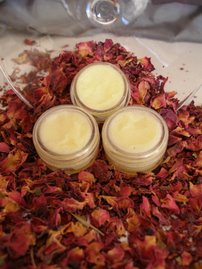There are so many words just thrown around in bath and body and many people are confused about what they mean. This is a look at what some of those terms mean and what effect they have on what you are buying.
Natural-
One of the most misunderstood and misused words in the market. When you go into any store from the grocery store to high-end specialty stores you will see this tagline on many, many products. What does it mean? Nothing. Natural is a word that has no regulation whatsoever and can mean whatever the seller deems it to mean.
Organic-
Organic is a term that, unlike “natural,” has set regulations. In order to call any product in the US Organic the USDA and AMS has to approve the grower and producer.
“Organic food is produced by farmers who emphasize the use of renewable resources and the conservation of soil and water to enhance environmental quality for future generations. Organic meat, poultry, eggs, and dairy products come from animals that are given no antibiotics or growth hormones. Organic food is produced without using most conventional pesticides; fertilizers made with synthetic ingredients or sewage sludge; bioengineering; or ionizing radiation. Before a product can be labeled "organic," a Government-approved certifier inspects the farm where the food is grown to make sure the farmer is following all the rules necessary to meet USDA organic standards. Companies that handle or process organic food before it gets to your local supermarket or restaurant must be certified, too.”
In order to be labeled “Organic” a product must contain 95% organic ingredients (not including water or salt which can not be labeled Organic). No added sulfites and no more then 5% of:
a. Non-organically produced agricultural ingredients which are not commercially available in organic form; and/or
b. other substances allowed by 7 CFR 205.605.
To be labeled “Made with Organic Ingredients” (or similar) a product must contain at least 70% organic ingredients (not including water or salt), no added sulfites and may contain up to 30% of:
a. non-organically produced agricultural ingredients; and/or
b. other substances, including yeast (this is mostly for wine production), allowed by 7 CFR 205.605.
To claim your product has “Some Organic Ingredients” it can contain less the 70% of organic ingredients and 30% or more of
a. non-organically produced agricultural ingredients; and/or
b. other substances, including yeast (this is mostly for wine production), allowed by 7 CFR 205.605.
Information provided from the USDA and AMS:
http://www.ams.usda.gov/nop/ProdHandlers/LabelTable.html
http://www.ams.usda.gov/nop/Consumers/Consumerhome.html
Wild Harvested-
Is another term that does not have set regulations but tends to apply to any and all herbs, plants or barks harvested from plants that are growing wild. Very often these plants are raised naturally with out synthetics or chemicals, but only the quality of the source can prove this.
Fair Trade-
Is a movement based on treating people from other countries in a fair and equal manner by paying a fair and standard price for products.
Definition from PBS (www.pbs.com)-
“ A term used to describe a social-responsibility movement demanding that farmers receive fair prices for their products; also describes products that are produced by these farmers.”
Because this is a movement and not based on laws you must trust your supplier to make sure that ingredients are from true fair trade sources.
Vegan-
Is a term for a type of vegetarian who does not use or consume products that come from a animal source, this also includes byproducts such as gelatin (from cartilage and bone), beeswax, honey, wool, leather, dairy, and, in many cases, white sugar, which is processed using bone. Raw Sugar is ok as the process is done without bone.
Essential Oils-
Is the process of removing natural essence from plants, flowers, fruits, herbs, spices and some resin. The natural oils and scent are removed in several different processes. Some naturals like citrus can create large amounts of oils for use cheaply, others like rose take large amounts of flowers in order to create just a small portion of essential. This is why essential oil costs vary so much.
Essential oils are great for their natural aromatherapy, healing properties, clean fragrance and predictability for those with allergies and sensitivities.
The downside of Essentials is the cost of some oils and the limit to scents as not all naturals can be made into essentials. Certain oils also have allergens and side effects for some people such as diabetics and pregnant women.
Fragrance Oils-
Are synthetics created with man made ingredients to create a cheaper and more consistent product, in many scents that are unable to be made from naturals. The downside to Fragrance Oils is the lack of Aromatherapy and healing properties and allergies for some with sensitivities.
These are just some of the terms you might just see on the labels of your bath and body products. My next piece is going to be on Soap.
Subscribe to:
Post Comments (Atom)








No comments:
Post a Comment